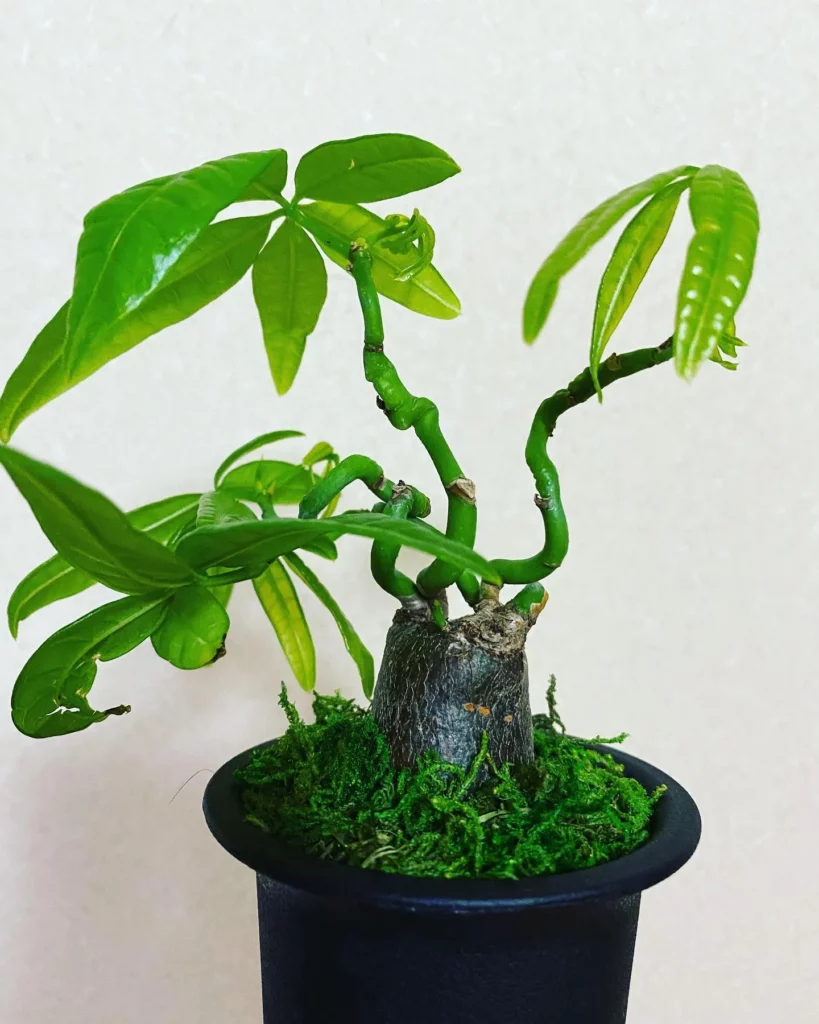Discover the beauty and ease of caring for the Guiana Chestnut (Pachira aquatica), a striking houseplant known for its glossy green leaves, elegant bark, and vibrant foliage with five to seven leaflets.
Admired for its occasional pink or white flowers and unique fruits, this plant is perfect for both novice and experienced gardeners, promising to thrive with minimal care and become a captivating focal point in any indoor setting.
No products found.
Understanding the Appearance of Guiana Chestnut
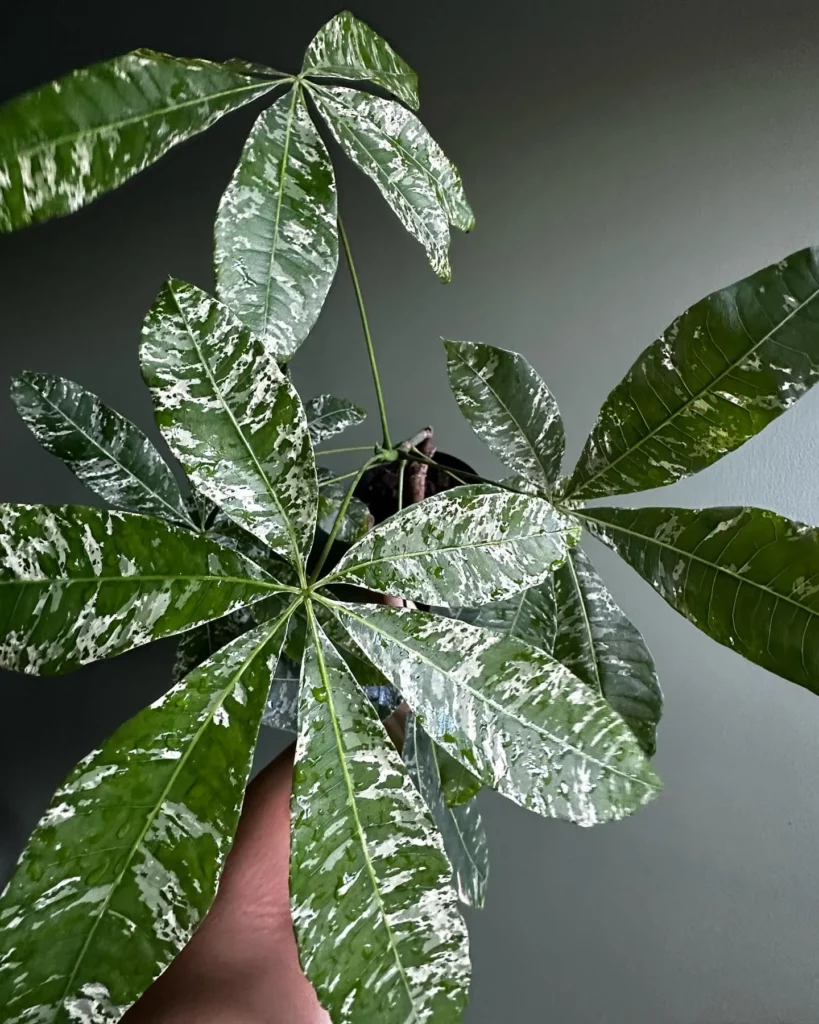
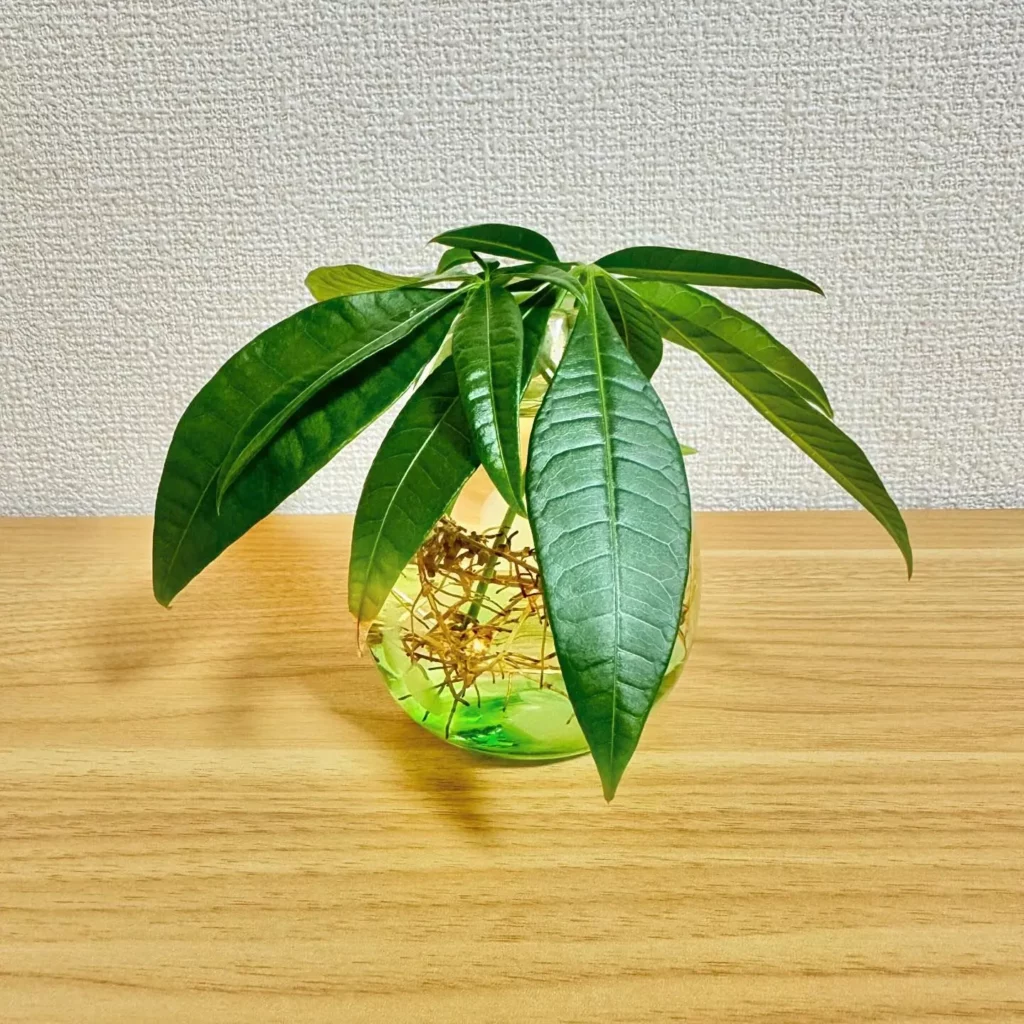
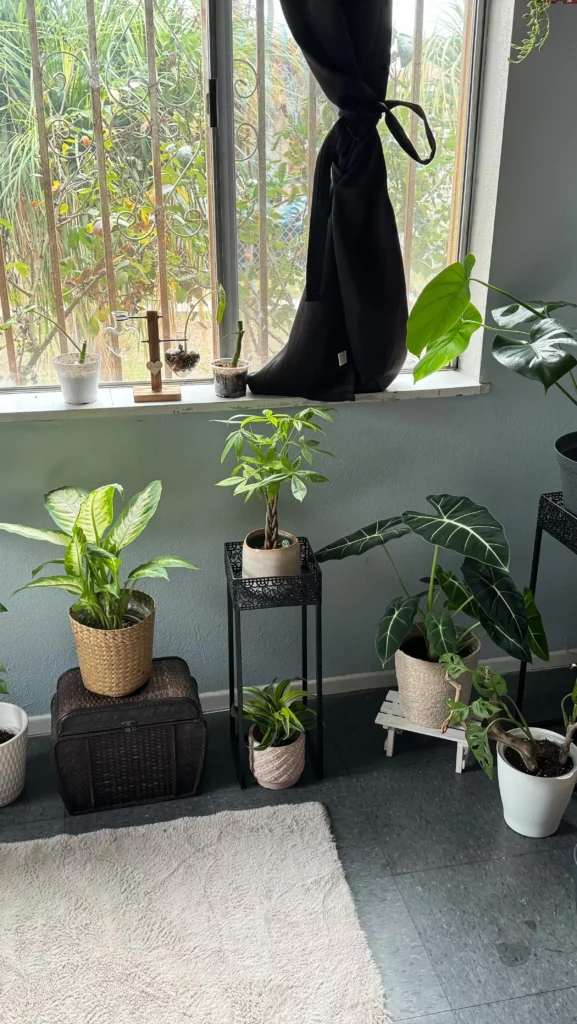
The Guiana Chestnut is a beautiful and captivating plant that will add a touch of elegance to any indoor space. Its appearance is marked by its unique features that are sure to catch the eye.
Shiny Green Leaves
The Guiana Chestnut boasts shiny green leaves, which add a lively and vibrant look to the plant. These leaves are composed of five to seven leaflets, arranged in an attractive pattern that enhances the overall aesthetics of the plant.
Smooth Grayish-Brown Bark
Adding to its charm, the Guiana Chestnut features smooth bark that is grayish-brown in color. This bark provides a striking contrast against the plant’s green foliage, creating a visually appealing display.
Exotic Flowers and Chestnut-Shaped Fruits
One of the most captivating aspects of the Guiana Chestnut is its ability to produce stunning, exotic-looking flowers. These flowers can range in color, with beautiful shades of pink and white. Following the flowers, the Guiana Chestnut produces iconic chestnut-shaped fruits that further enhance its unique appearance.
Providing the Right Light Requirements
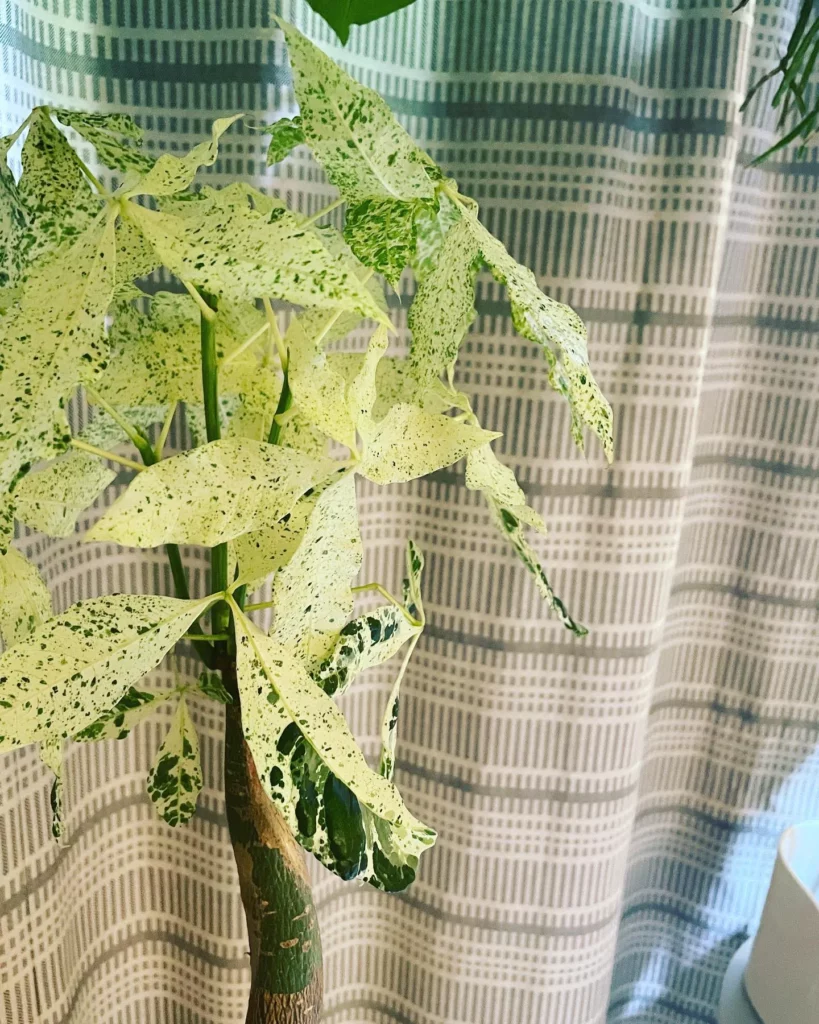
Guiana Chestnut plants thrive in bright, indirect light. To ensure optimal growth, place your plant near a north or east-facing window, allowing it to receive gentle sunlight throughout the day. It’s important to avoid exposing your Guiana Chestnut to direct sunlight, as it can scorch the leaves and cause damage to the plant.
No products found.
If your indoor space lacks adequate natural light, you can supplement it with fluorescent grow lights. Positioning these lights 12 to 18 inches above the plant will help provide the necessary light intensity. This way, your Guiana Chestnut can thrive even in areas with limited access to sunlight.
Watering Your Guiana Chestnut
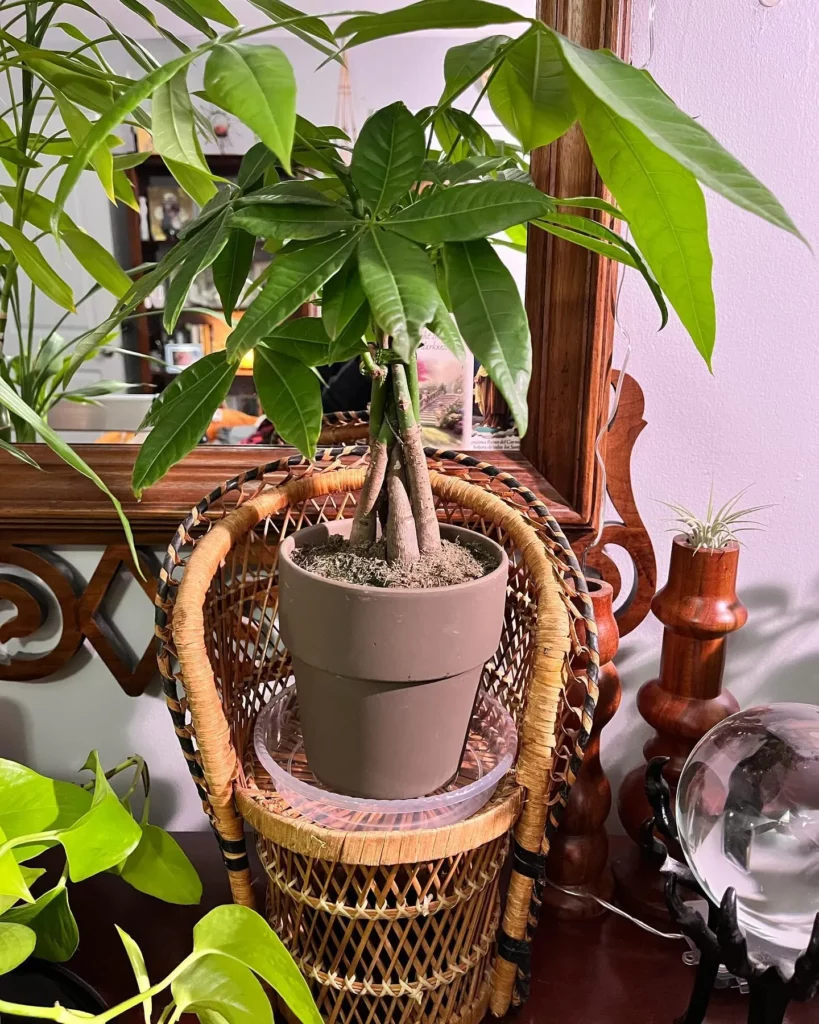
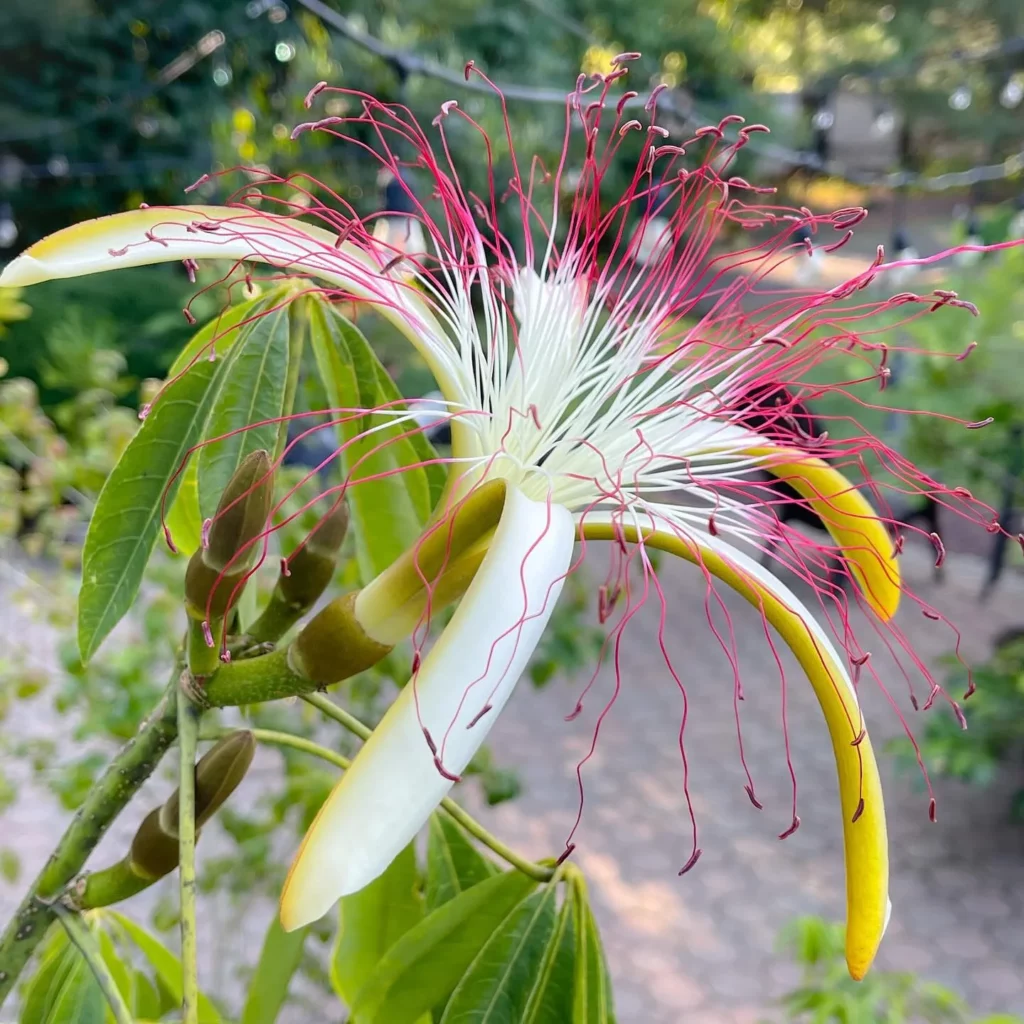
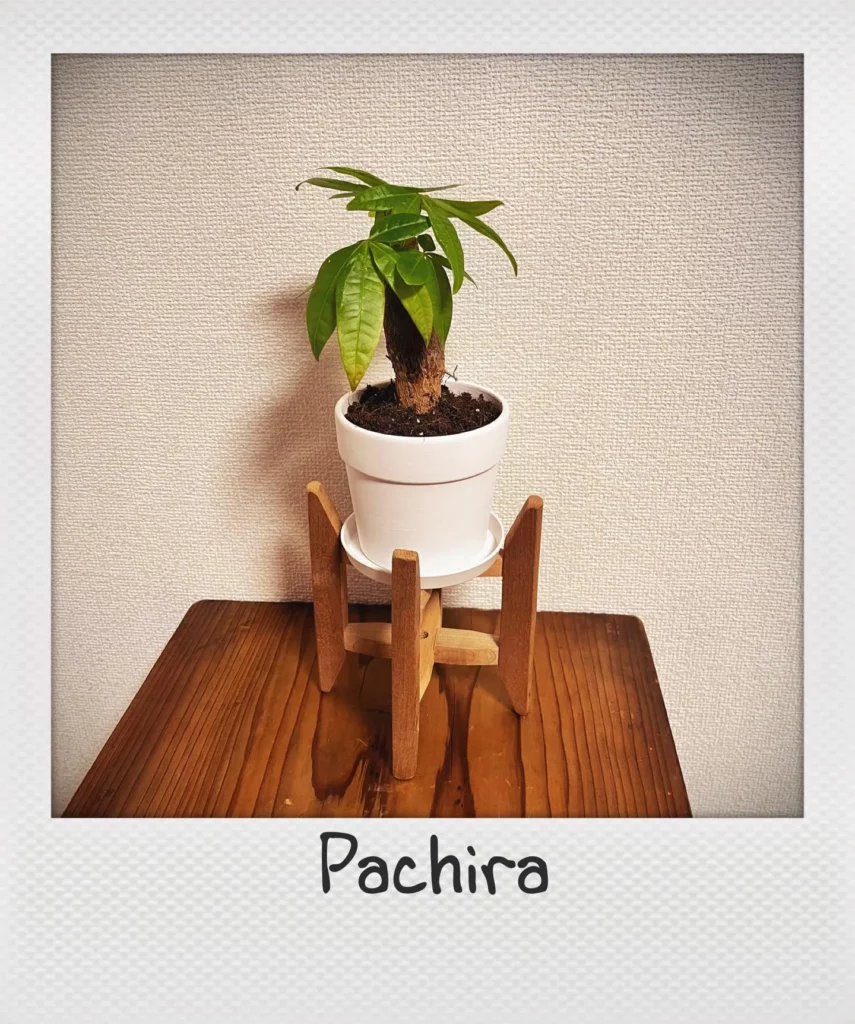
Proper watering is essential for the health and vitality of your Guiana Chestnut plant. By following these guidelines, you can ensure that your plant receives the right amount of moisture without risking overwatering.
No products found.
- Consistently moist soil: Guiana Chestnut plants prefer soil that is consistently moist, but not waterlogged. It’s important to strike a balance by providing adequate moisture without saturating the soil.
- Monitor soil moisture: Regularly check the moisture level of the soil by gently inserting your finger about an inch deep. If the top inch of the soil feels dry to the touch, it’s time to water your plant.
- Thorough watering: When watering your Guiana Chestnut, make sure to thoroughly soak the soil. This helps to ensure that the water reaches the plant’s root system.
- Avoid overwatering: Overwatering can lead to root rot and other problems for your Guiana Chestnut. It’s important to avoid allowing the plant to sit in water for prolonged periods.
- Adjust watering frequency: The watering frequency may vary depending on factors such as temperature, humidity, and the size of the pot. Monitor the soil moisture regularly and adjust your watering frequency accordingly.
- Winter care: During the winter months, when growth slows down, reduce watering. However, be sure to prevent the soil from completely drying out.
Fertilizing the Guiana Chestnut

Guiana Chestnut plants require regular fertilization during the growing season, which typically starts in spring and continues until early fall. Providing the right nutrients will help your Guiana Chestnut thrive and maintain its vibrant appearance.
No products found.
To fertilize your Guiana Chestnut, use a balanced, water-soluble fertilizer with an NPK ratio of 10-10-10 or 20-20-20. This balanced ratio ensures that your plant receives equal amounts of essential nutrients like nitrogen, phosphorus, and potassium.
Before applying the fertilizer, dilute it to half the recommended strength. This helps prevent overfertilization and minimizes the risk of damaging the plant’s roots. Diluting the fertilizer also ensures that nutrients are evenly distributed throughout the soil.
Apply the diluted fertilizer every two to four weeks during the growing season. This regular feeding schedule provides a consistent supply of nutrients to support healthy growth and development. Avoid fertilizing your Guiana Chestnut during the winter months when its growth naturally slows down.
Potting and Repotting the Guiana Chestnut

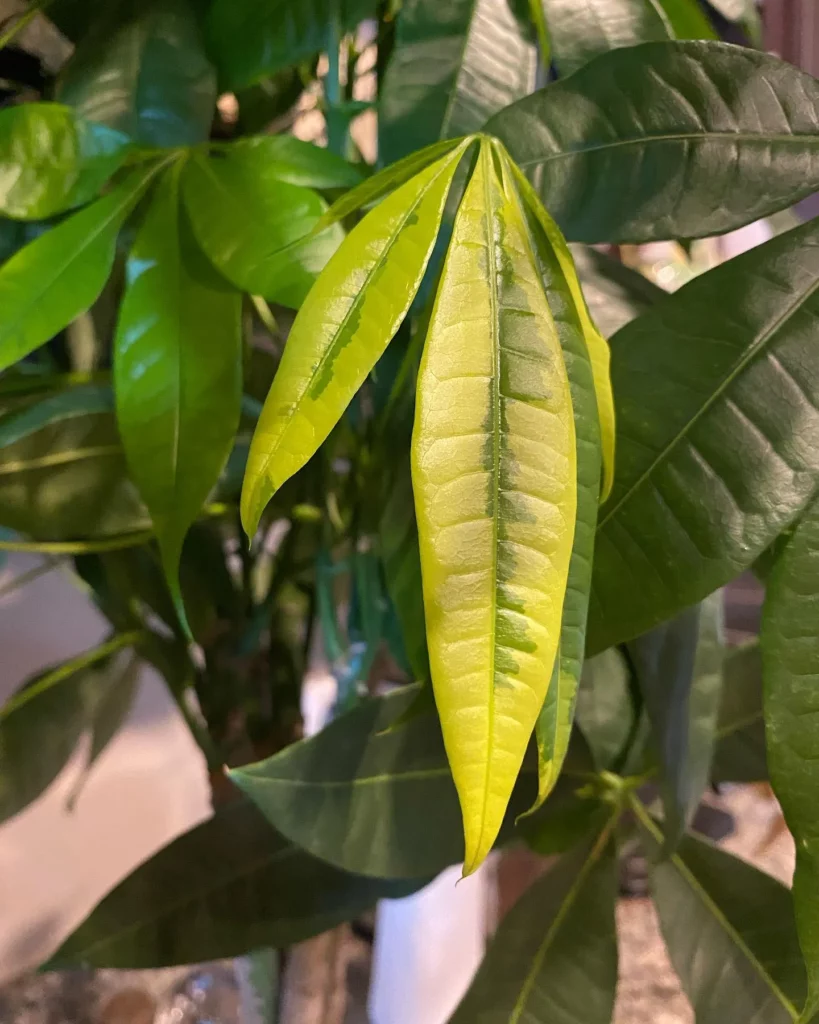
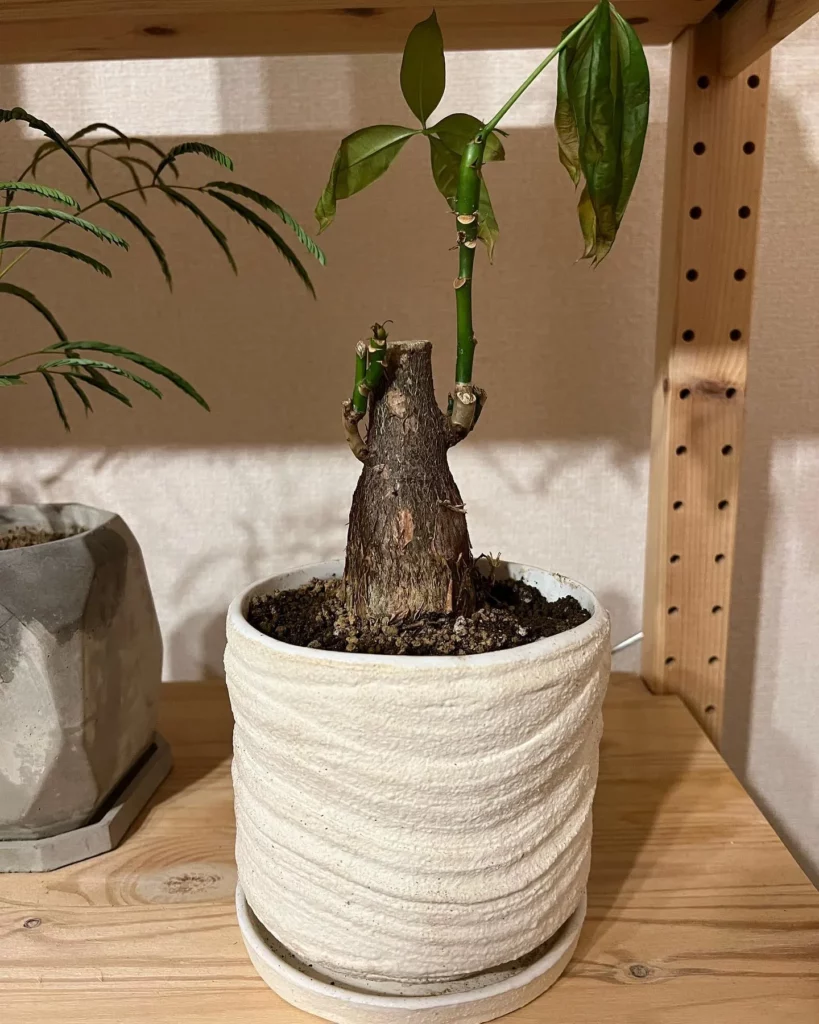
When it comes to potting your Guiana Chestnut, selecting the right potting mix is crucial. Opt for a well-draining mix that retains moisture without becoming soggy. This will help prevent waterlogging and ensure optimal root health for your plant.
Additionally, it’s important to choose a pot with drainage holes at the bottom. These holes allow excess water to escape, preventing the roots from sitting in stagnant water. This simple step can help avoid root rot and other moisture-related issues.
No products found.
As your Guiana Chestnut grows, it will eventually outgrow its current pot. Repotting every two to three years is recommended to provide ample space for the expanding root system. When repotting, gradually increase the pot size to accommodate the plant’s growth.
Spring is the ideal time for repotting your Guiana Chestnut. During this season, the plant is naturally entering a period of active growth, making it more receptive to the transition. Remember to handle the plant gently during the repotting process to avoid damaging the delicate roots.
Propagating Guiana Chestnut
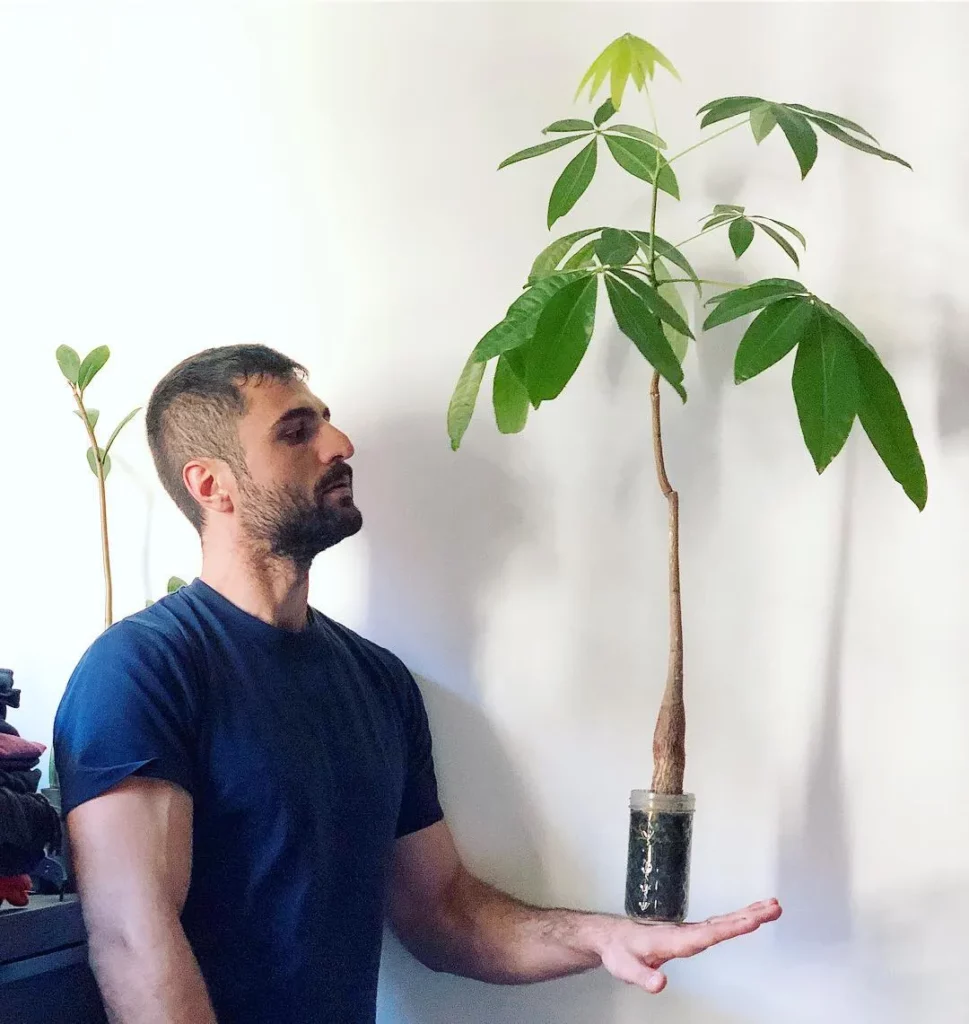
If you want to expand your collection of Guiana Chestnut plants or share the joy of growing this beautiful foliage with others, propagating your plant through stem cuttings is an excellent option.
No products found.
To get started, select a healthy and mature stem from your Guiana Chestnut plant. Make a clean cut just below a node, ensuring that the cutting is around 6-8 inches long.
- Removing leaves: Remove the leaves from the lower portion of the stem, leaving only a few leaves at the top. This helps the cutting focus its energy on root development.
- Water propagation: Fill a container with water and place the stem cutting in it. Position it in a warm and bright location, but avoid direct sunlight. Change the water every few days to maintain its freshness and prevent the growth of harmful bacteria.
- Root development: After a few weeks, you’ll start to see roots forming from the submerged part of the stem. Keep an eye on the progress and be patient as it can take some time for the roots to develop fully.
- Potting the cutting: Once the roots are around 2-3 inches long, it’s time to pot the cutting. Choose a well-draining soil mix that suits the needs of Guiana Chestnut. Place the cutting in the pot, ensuring the roots are covered with soil, and gently press it down to secure the cutting in place.
Growth and Development of Guiana Chestnut
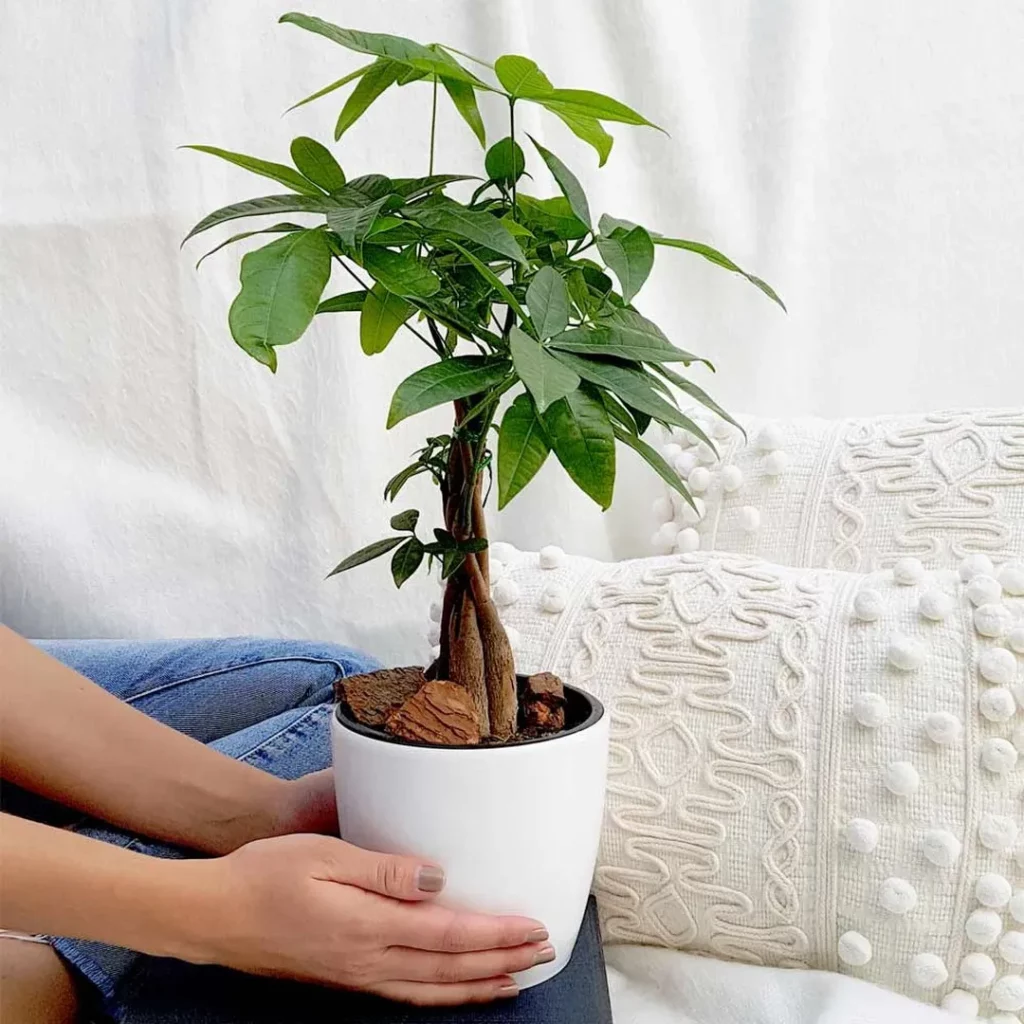
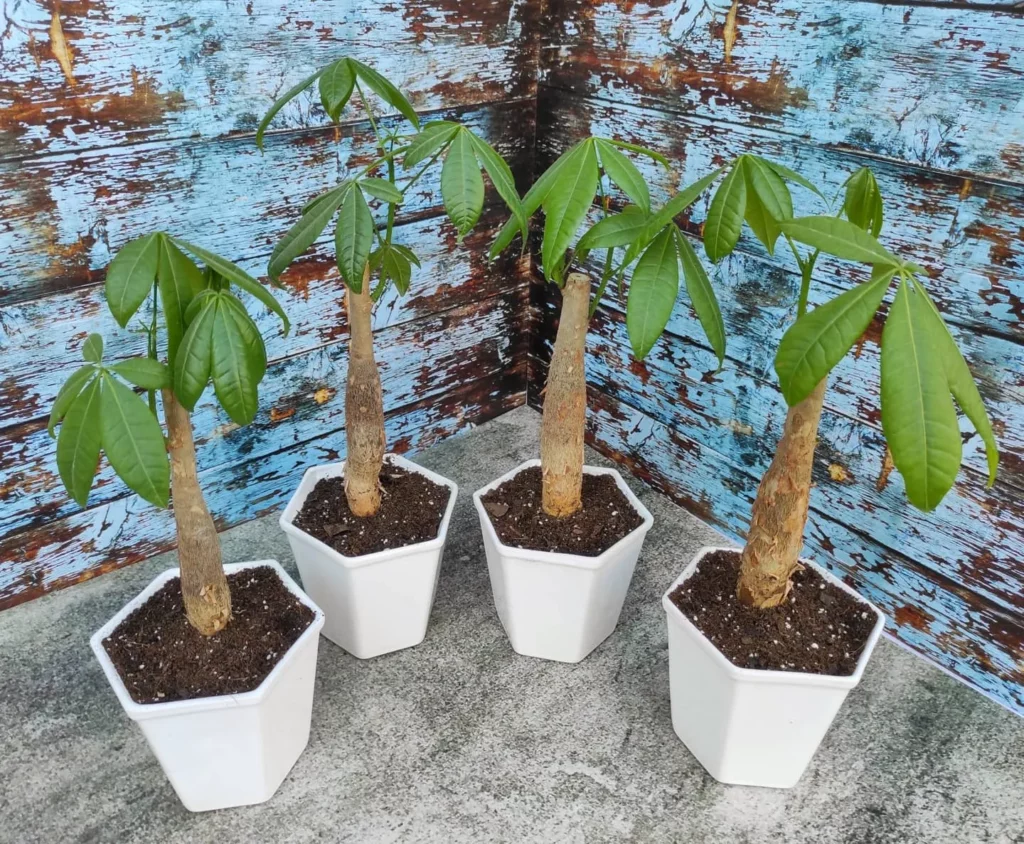
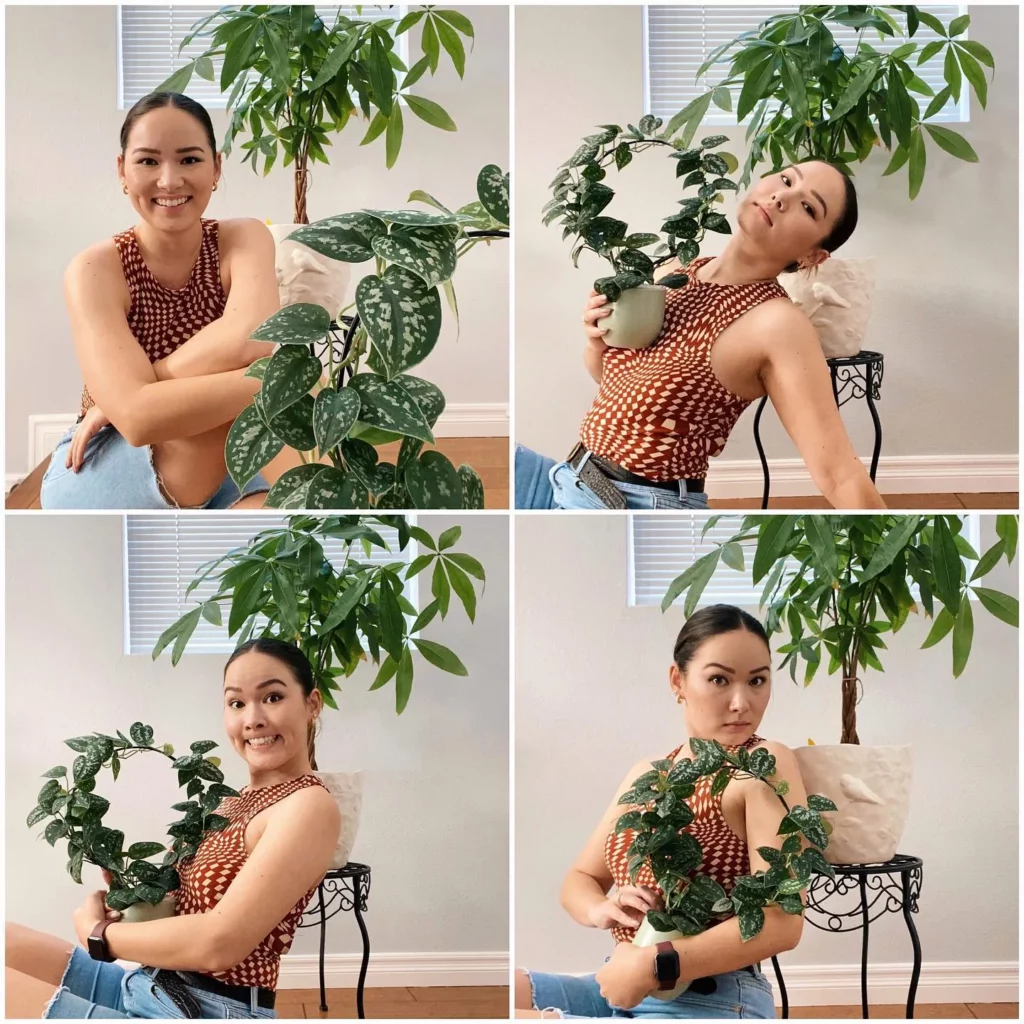
Guiana Chestnut plants have the remarkable ability to grow relatively quickly and thrive indoors. Throughout the growing season, you can expect to see new leaves appearing regularly, adding to the plant’s beauty and vibrancy. To ensure your Guiana Chestnut maintains its desired shape and stays healthy, it’s important to prune it regularly.
Pruning allows you to shape the plant and remove any dead or damaged leaves, promoting overall growth and development. By removing these unwanted elements, you create space for new leaves and branches to sprout, enhancing the plant’s visual appeal.
With proper care and attention, your Guiana Chestnut can reach impressive heights of up to six feet when grown indoors. This tall stature adds a touch of elegance to any space, making it a striking focal point in your home or office.
Dealing with Pests and Diseases
Guiana Chestnut plants, like any other houseplant, are susceptible to a few common pests and diseases. By taking proactive measures and being observant, you can keep your Guiana Chestnut healthy and thriving. Here are some steps you can take to deal with pests and diseases:
1. Regular Inspections:
Inspect your Guiana Chestnut regularly for signs of pest infestation, such as webbing, sticky residue, or visible pests on the leaves, stems, or soil. Early detection is crucial for effective treatment.
2. Organic Insecticidal Soaps or Neem Oil:
No products found.
If you notice any pests on your Guiana Chestnut, treat the infestation promptly using organic insecticidal soaps or neem oil. These natural remedies can effectively control pests like spider mites, mealybugs, and scale insects without harming the plant.
3. Proper Air Circulation:
Ensure that your Guiana Chestnut plant has adequate air circulation. Good airflow helps prevent the buildup of moisture, which can attract pests and promote the development of fungal diseases.
4. Avoid Overwatering:
Overwatering can contribute to the development of fungal diseases, such as root rot. It’s important to water your Guiana Chestnut plant only when the top inch of the soil feels dry to the touch. Avoid letting the plant sit in standing water.
Conclusion
Congratulations! You now have all the knowledge and tips you need to care for your Guiana Chestnut plant. By following this care guide and providing the right conditions, your Guiana Chestnut will thrive and bring natural beauty to your indoor space.
Remember to place your Guiana Chestnut in a bright, indirect light location, and water it when the top inch of the soil feels dry. Don’t forget to fertilize during the growing season to promote healthy growth. Proper potting and repotting techniques will ensure your plant has enough space to grow and develop.
Enjoy the satisfaction of nurturing this stunning plant and watching it grow over time. As you care for your Guiana Chestnut, it will reward you with its lush foliage, elegant appearance, and occasional exotic blooming. Happy gardening!
FAQ
Q: How often should I water my Guiana Chestnut?
Guiana Chestnut plants prefer consistently moist soil. Water your plant thoroughly when the top inch of the soil feels dry to the touch. Avoid overwatering, as it can lead to root rot. Monitor the soil moisture regularly and adjust your watering frequency accordingly. During the winter months, reduce watering but ensure the soil doesn’t completely dry out.
How do I provide the right light requirements for my Guiana Chestnut?
Guiana Chestnut plants thrive in bright, indirect light. Placing your plant near a north or east-facing window is ideal. Be cautious of direct sunlight, as it can scorch the leaves. If your indoor space lacks adequate natural light, consider supplementing it with fluorescent grow lights placed 12 to 18 inches above the plant.
How often should I fertilize my Guiana Chestnut?
Guiana Chestnut plants benefit from regular fertilization during the growing season, which spans from spring to early fall. Use a balanced, water-soluble fertilizer with an NPK ratio of 10-10-10 or 20-20-20. Dilute the fertilizer to half the recommended strength and apply it every two to four weeks. Avoid fertilizing during the winter months when growth slows down.
When should I repot my Guiana Chestnut?
Repot your Guiana Chestnut every two to three years, gradually increasing the pot size to accommodate its growing root system. Choose a well-draining potting mix that retains moisture without becoming soggy. Ensure the chosen pot has drainage holes to prevent waterlogging. Spring is the ideal time for repotting.
How can I propagate my Guiana Chestnut?
You can propagate Guiana Chestnut through stem cuttings. Select a healthy, mature stem and cut it just below a node. Remove leaves from the lower portion of the stem and place it in a container with water. Keep the cutting in a warm, bright location and change the water every few days. Once roots form, pot the cutting in a well-draining soil mix.
How do I deal with pests and diseases on my Guiana Chestnut?
Guiana Chestnut plants can be susceptible to pests such as spider mites, mealybugs, and scale insects. Inspect your plant regularly for signs of infestation, including webbing, sticky residue, or visible pests. Treat infestations promptly using organic insecticidal soaps or neem oil. Additionally, ensure proper air circulation and avoid overwatering to prevent fungal diseases.

